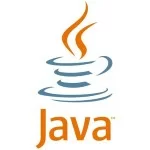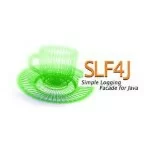Moving With The Times: Towards OpenAPI v3.0.0 adoption in JAX-RS APIs
It is terrifying to see how fast time passes! The OpenAPI specification 3.0.0, a major revamp of so-get-used-to Swagger specification, has been released mostly one year ago but it took awhile for tooling to catch up. However, with the recent official release of the Swagger Core 2.0.0 things are going to accelerate for sure.
To prove the point, Apache CXF, the well-known JAX-RS 2.1 implementation, is one of the first adopters of the OpenAPI 3.0.0 and in today’s post we are going to take a look how easy your JAX-RS 2.1 APIs could benefit from it.
As always, to keep things simple we are going to design a people management web APIs with just a handful set of resources to support it, nothing too exciting here.
POST /api/people
GET /api/people/{email}
GET /api/people
DELETE /api/people/{email}Our model would consist of a single Person class.
public class Person {
private String email;
private String firstName;
private String lastName;
}To add a bit of magic, we would be using Spring Boot to get us up and running as fast as possible. With that, let us start to fill in the dependencies (assuming we are using Apache Maven for build management).
<dependency>
<groupId>org.apache.cxf</groupId>
<artifactId>cxf-spring-boot-starter-jaxrs</artifactId>
<version>3.2.4</version>
</dependency>In the recent 3.2.x releases Apache CXF introduces a new module cxf-rt-rs-service-description-openapi-v3 dedicated to OpenAPI 3.0.0, based on Swagger Core 2.0.0.
<dependency>
<groupId>org.apache.cxf</groupId>
<artifactId>cxf-rt-rs-service-description-openapi-v3</artifactId>
<version>3.2.4</version>
</dependency>
<dependency>
<groupId>org.webjars</groupId>
<artifactId>swagger-ui</artifactId>
<version>3.13.6</version>
</dependency>The presence of the Swagger UI is not strictly necessary, but this is exceptionally useful and beautiful tool to explore your APIs (and if it is available on classpath, Apache CXF seamlessly integrates it into your applications as we are going to see in a bit).
The prerequisites are in place, let us do some coding! Before we begin, it is worth to note that the Swagger Core 2.0.0 has many ways to populate the OpenAPI 3.0.0 definitions for your services, including property files, annotations or programmatically. Along this post we are going to use annotations only.
@OpenAPIDefinition(
info = @Info(
title = "People Management API",
version = "0.0.1-SNAPSHOT",
license = @License(
name = "Apache 2.0 License",
url = "http://www.apache.org/licenses/LICENSE-2.0.html"
)
)
)
@ApplicationPath("api")
public class JaxRsApiApplication extends Application {
}Looks pretty simple, the @OpenAPIDefinition sets the top-level definition for all our web APIs. Moving on to the PeopleRestService, we just add the @Tag annotation to, well, tag our API.
@Path( "/people" )
@Tag(name = "people")
public class PeopleRestService {
// ...
}Awesome, nothing complicated so far. The meaty part starts with web API operation definitions, so let us take a look on the first example, the operation to fetch everyone.
@Produces(MediaType.APPLICATION_JSON)
@GET
@Operation(
description = "List all people",
responses = {
@ApiResponse(
content = @Content(
array = @ArraySchema(schema = @Schema(implementation = Person.class))
),
responseCode = "200"
)
}
)
public Collection<Person> getPeople() {
// ...
}Quite a few annotations but by and large, looks pretty clean and straightforward. Let us take a look on another one, the endpoint to find the person by its e-mail address.
@Produces(MediaType.APPLICATION_JSON)
@Path("/{email}")
@GET
@Operation(
description = "Find person by e-mail",
responses = {
@ApiResponse(
content = @Content(schema = @Schema(implementation = Person.class)),
responseCode = "200"
),
@ApiResponse(
responseCode = "404",
description = "Person with such e-mail doesn't exists"
)
}
)
public Person findPerson(
@Parameter(description = "E-Mail address to lookup for", required = true)
@PathParam("email") final String email) {
// ...
}In the same vein, the operation to remove the person by e-mail looks mostly identical.
@Path("/{email}")
@DELETE
@Operation(
description = "Delete existing person",
responses = {
@ApiResponse(
responseCode = "204",
description = "Person has been deleted"
),
@ApiResponse(
responseCode = "404",
description = "Person with such e-mail doesn't exists"
)
}
)
public Response deletePerson(
@Parameter(description = "E-Mail address to lookup for", required = true )
@PathParam("email") final String email) {
// ...
}Great, let us wrap up by looking into last, arguably the most interesting endpoint which adds a new person (the choice to use the @FormParam is purely to illustrate the different flavor of the APIs).
@Consumes(MediaType.APPLICATION_FORM_URLENCODED)
@Produces(MediaType.APPLICATION_JSON)
@POST
@Operation(
description = "Create new person",
responses = {
@ApiResponse(
content = @Content(
schema = @Schema(implementation = Person.class),
mediaType = MediaType.APPLICATION_JSON
),
headers = @Header(name = "Location"),
responseCode = "201"
),
@ApiResponse(
responseCode = "409",
description = "Person with such e-mail already exists"
)
}
)
public Response addPerson(@Context final UriInfo uriInfo,
@Parameter(description = "E-Mail", required = true)
@FormParam("email") final String email,
@Parameter(description = "First Name", required = true)
@FormParam("firstName") final String firstName,
@Parameter(description = "Last Name", required = true)
@FormParam("lastName") final String lastName) {
// ...
}If you have an experience with documenting web APIs using older Swagger specifications, you might find the approach quite familiar but more verbose (or better to say, formalized). It is the result of the tremendous work which specification leads and community has done to make it as complete and extensible as possible.
The APIs are defined and documented, it is time to try them out! The missing piece though is the Spring configuration where we would initialize and expose our JAX-RS web services.
@Configuration
@EnableAutoConfiguration
@ComponentScan(basePackageClasses = PeopleRestService.class)
public class AppConfig {
@Autowired private PeopleRestService peopleRestService;
@Bean(destroyMethod = "destroy")
public Server jaxRsServer(Bus bus) {
final JAXRSServerFactoryBean factory = new JAXRSServerFactoryBean();
factory.setApplication(new JaxRsApiApplication());
factory.setServiceBean(peopleRestService);
factory.setProvider(new JacksonJsonProvider());
factory.setFeatures(Arrays.asList(new OpenApiFeature()));
factory.setBus(bus);
factory.setAddress("/");
return factory.create();
}
@Bean
public ServletRegistrationBean cxfServlet() {
final ServletRegistrationBean servletRegistrationBean = new ServletRegistrationBean(new CXFServlet(), "/api/*");
servletRegistrationBean.setLoadOnStartup(1);
return servletRegistrationBean;
}
}The OpenApiFeature is a key ingredient here which takes care of all the integration and introspection. The Spring Boot application is the last touch to finish the picture.
@SpringBootApplication
public class Application {
public static void main(String[] args) {
SpringApplication.run(AppConfig.class, args);
}
}Let us build and run it right away:
mvn clean package java -jar target/jax-rs-2.1-openapi-0.0.1-SNAPSHOT.jar
Having the application started, the OpenAPI 3.0.0 specification of our web APIs should be live and available for consumption in the JSON format at:
http://localhost:8080/api/openapi.json
Or in YAML format at:
http://localhost:8080/api/openapi.json
Wouldn’t it be great to explore our web APIs and play with it? Since we included Swagger UI dependency, this is no brainer, just navigate to http://localhost:8080/api/api-docs?url=/api/openapi.json:
A special attention to be made to the small icon Swagger UI places alongside your API version, hinting about its conformity to OpenAPI 3.0.0 specification.
Just to note here, there is nothing special in using Spring Boot. In case you are using Apache CXF inside the OSGi container (like Apache Karaf for example), the integration with OpenAPI 3.0.0 is also available (please check out the official documentation and samples if you are interested in the subject).
It all looks easy and simple, but what about migrating to OpenAPI 3.0.0 from older versions of the Swagger specifications? The Apache CXF has an powerful feature to convert older the specifications on the fly but in general the OpenApi.Tools portal is a right place to evaluate your options.
Should you migrate to OpenAPI 3.0.0? I honestly believe you should, at least should try experimenting with it, but please be aware that the tooling is still not mature enough, expect a few roadblocks along the way (which you would be able to overcome by contributing the patches, by the way). But undoubtedly, the future is bright!
The complete project sources are available on Github.
| Published on Java Code Geeks with permission by Andrey Redko, partner at our JCG program. See the original article here: Moving With The Times: Towards OpenAPI v3.0.0 adoption in JAX-RS APIs Opinions expressed by Java Code Geeks contributors are their own. |








Thanks for the effort. But I have a doubt how can I autowire my service class into generated code of api class and invoke service method?
That’s right, in general when you use code generation for server side, you would get the skeleton which has to be filled out with the relevant implementation.